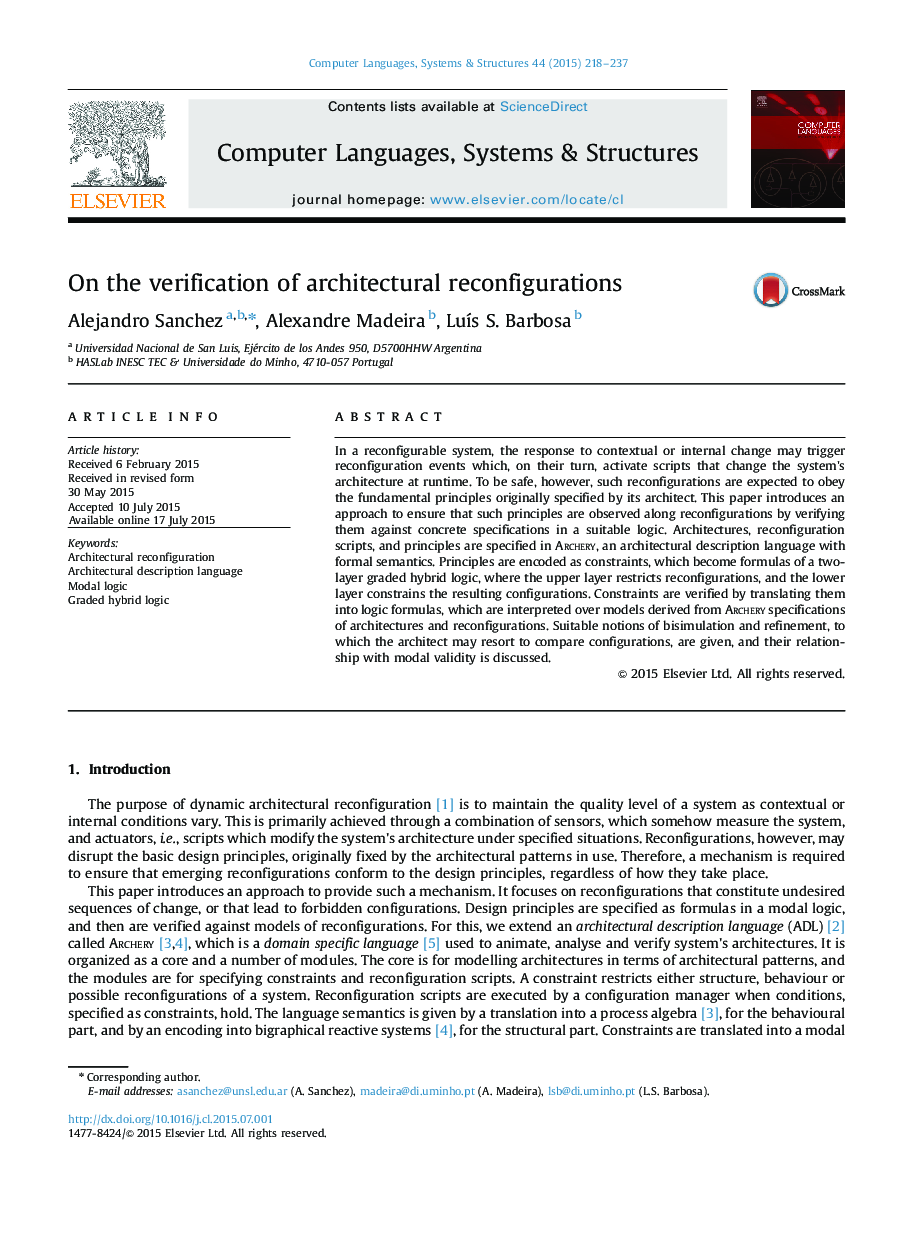| Article ID | Journal | Published Year | Pages | File Type |
|---|---|---|---|---|
| 417937 | Computer Languages, Systems & Structures | 2015 | 20 Pages |
•Describes approach to ensure fundamental principles of a system in reconfigurations.•Specifies principles as constraints in an architectural description language.•Translates constraints into a two-layer graded hybrid logic.•Derives interpretation models from specifications of architectures and reconfigurations.•Provides equivalence and refinement notions to compare reconfigurations.
In a reconfigurable system, the response to contextual or internal change may trigger reconfiguration events which, on their turn, activate scripts that change the system׳s architecture at runtime. To be safe, however, such reconfigurations are expected to obey the fundamental principles originally specified by its architect. This paper introduces an approach to ensure that such principles are observed along reconfigurations by verifying them against concrete specifications in a suitable logic. Architectures, reconfiguration scripts, and principles are specified in Archery, an architectural description language with formal semantics. Principles are encoded as constraints, which become formulas of a two-layer graded hybrid logic, where the upper layer restricts reconfigurations, and the lower layer constrains the resulting configurations. Constraints are verified by translating them into logic formulas, which are interpreted over models derived from Archery specifications of architectures and reconfigurations. Suitable notions of bisimulation and refinement, to which the architect may resort to compare configurations, are given, and their relationship with modal validity is discussed.
